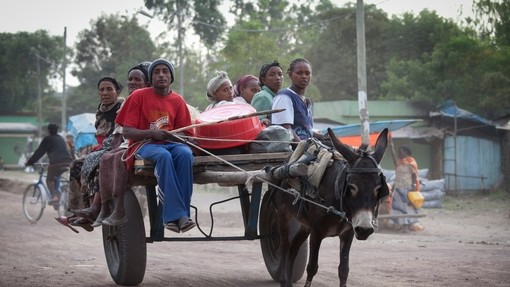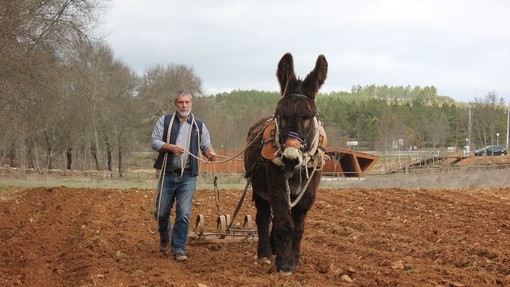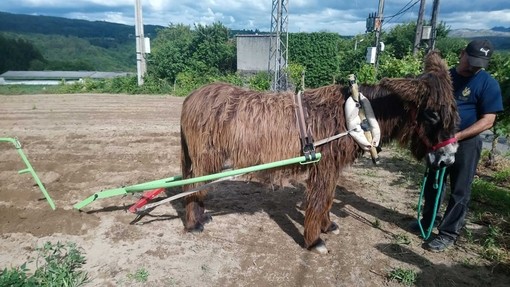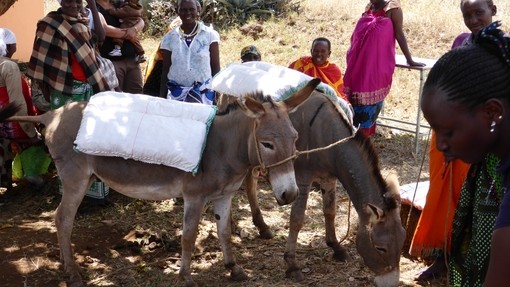Foreword
Inappropriate harness design, use and maintenance are key causes of poor donkey welfare, but with good training and advice we can ensure that working donkeys around the world don’t suffer.
Harness is a very simple yet complicated topic. It’s simple in that it refers to the way a power source, in our case a donkey, is attached to a load, be it a cart, packsaddle or rider. It’s also simple in that, as long as certain basic rules are followed, it is straightforward. Unfortunately, these simple techniques, when acting together, can become quite complicated.
I’ve tried to show how harness should work in a mainly pictorial way to overcome language and literacy problems. I’ve also added some suggestions in ‘trainer’s notes’ at the back of the leaflet, which in the past have helped me to explain to donkey owners how harness works
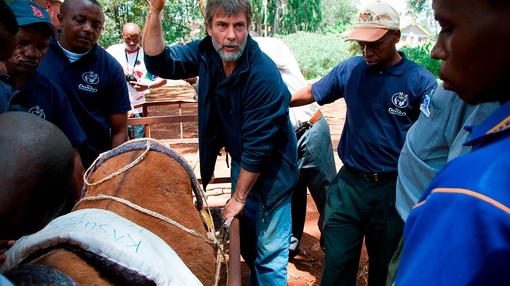
I try to use local materials and construction techniques whenever possible; it’s not always easy to find these, but I’m becoming more and more certain that most of the donkeys’ harnessing problems are a result of modern living. If you talk to the elders in any community you’ll often find that their donkeys didn’t have the massive sores that we see now, and one of the reasons was that the harness was carefully made from natural fibres, and the people had a far greater understanding of both the harness’ and the donkey’s capabilities.
Look a little deeper and you’ll often find people who can remember how to make this harness, or at least what plants were used to make the materials. I usually learn as much as I teach in any of these communities, and I always try to remember that however much I may think I know, I don’t spend my life working with donkeys in the same way as the donkey owners do, and can never fully understand the whole picture.
Chris Garrett
International harness consultant
The Donkey Sanctuary
Causes of wounds
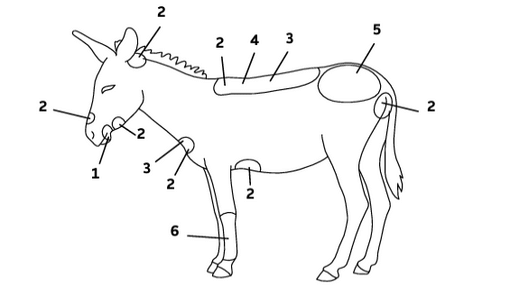
- Badly made bits, badly fitted bits and bad materials.
- Bad materials, too much pressure, incorrect fitting and incorrect crupper and dock.
- Cart, cargo, no swingle tree, balance or wrong materials.
- Badly made saddle, no saddle or badly fitted saddle.
- Beating or badly fitted or made shafts.
- Tethers & hobbles that are too tight or too thin.
Trainer’s Notes
It’s easier to explain something through demonstration than by talking. I use a lot of physical demonstrations to get my point across, which works for me. You obviously don’t have to use my ideas - as long as it works, do your own thing!
Warm ups and ice breakers - These are a good way to get a new group going. Speak to your Community Development Officers, or look on the web for ideas.
Parts of the Harness – We have a model that might be available. If not, use a real donkey and cart if possible. If you’re in a classroom you can use volunteers and rope to simulate donkeys and harness (this can be great fun!)
Materials – In most hot countries you’ll find that people are wearing cotton, and they know that nylon is hot. This is not always true, so use your eyes first before you put your foot in it! If you’re in an area where people use inner tubes to cover harness, get a volunteer to put their arm inside a piece and stand in the sun. Around one minute 20 seconds is the record so far, before the tube is ripped off (in a hot country)!
Pressure – See the demo in the book. I often use this in any group, as it’s another good ice breaker. I usually try and get a good competitive spirit going; I want them to feel a little pain and remember the lesson. I also use ropes, but be gentle as it’s easy to cause a bad friction burn.
Swingle Trees – These can be demonstrated easily by using a stick and some string or rope. First get a volunteer to be the donkey. Get them to swing their shoulders and pretend to be a donkey walking (on the spot, not moving). Put a rope around their shoulders and hold it rigidly in your hands. You are the cart, your arms are the shafts. The volunteer donkey will soon complain that the rope hurt
Glossary
- Breeching: Similar in appearance to a breast collar, and works in a similar way to act as the brakes.
- Bridle: Where reins are used the bridle is a key part of the system, working as a method of communication between the owner and his animal.
- Cargo: Used here to describe any weight pulled, or carried by the animal, and includes drivers and passengers.
- Cart: Used here to describe any type of wheeled animal drawn vehicle.
- Collar: Covers two basic types: the BREAST COLLAR, which is a simple strap-like arrangement used to allow the donkey something to push against, which in turn pulls the cart, and the FULL COLLAR, a far more sophisticated piece of work that does the same job, but more efficiently.
- Crupper: A strap that passes from the saddle, under the donkey’s tail, to keep the saddle from slipping forward.
- Docks: Another word sometimes used to describe a crupper.
- Dorsal process: What looks like the spine or backbone of the animal, no part of a saddle should touch this area.
- False breeching: A strap that passes from shaft to shaft about 4” or 10cm behind the donkey and acts as a brake in the same way that a breeching does, except it’s not attached directly to the donkey.
- Gullet: The space that separates the two sides, or panels of any type of saddle. Should be wide enough to clear the Dorsal Process all the way along the saddle.
- Hames: Two metal, or wooden bars that sit either side of the full collar. Their function is to transfer the weight of the load evenly along the collar, allowing it to sit correctly on the animal’s shoulders, and spreading the load evenly over them. They also serve as a fixing point for the traces.
- Harness: Used in this book to cover all types of saddles, webs and straps used on donkeys and mules. This is not strictly correct but is done for simplification.
- Headcollar: Usually used on the donkey’s head to attach a lead rope or tethering rope.
- Hobble: Not to be confused with the tether, a hobble is a strap or straps used to tie two legs loosely together, which stop an animal moving too fast or too far.
- Reins: Straps or ropes that connect the driver/rider to the bridle or headcollar.
- Saddle & straps: These sit on the donkey’s back. The saddle performs different functions depending on how the donkey is used. In cart harness its main function is to keep the cart shafts level; in riding or pack forms it provides a platform on which the rider or cargo should be able to be carried safely, securely and without injury to any parties - including the donkey.
- Shafts: The two long ‘arms’ of a cart, usually metal or wood, that connect to the harness, keep the cart level and provide fixings for various parts of the harness.
- Swingle tree: A short metal or wooden bar, fixed at the centre to the cart, and at each end via the traces to the collar. The cart fixing is such that it allows the swingle tree to move freely from side to side, allowing the harness to move freely with the animal, without causing abrasions. It is considered essential when using the breast collar, though is optional when using a full collar. Sometimes called the balancer/balance bar.
- Tethers: A strap or straps used to connect a donkey by the leg to a fixed point, in order to stop it wandering.
- Traces: The straps, ropes or chains that connect the collar directly to the cart or swingle tree.
The Good Harness Guide
Download the fully illustrated Good Harness Guide.

